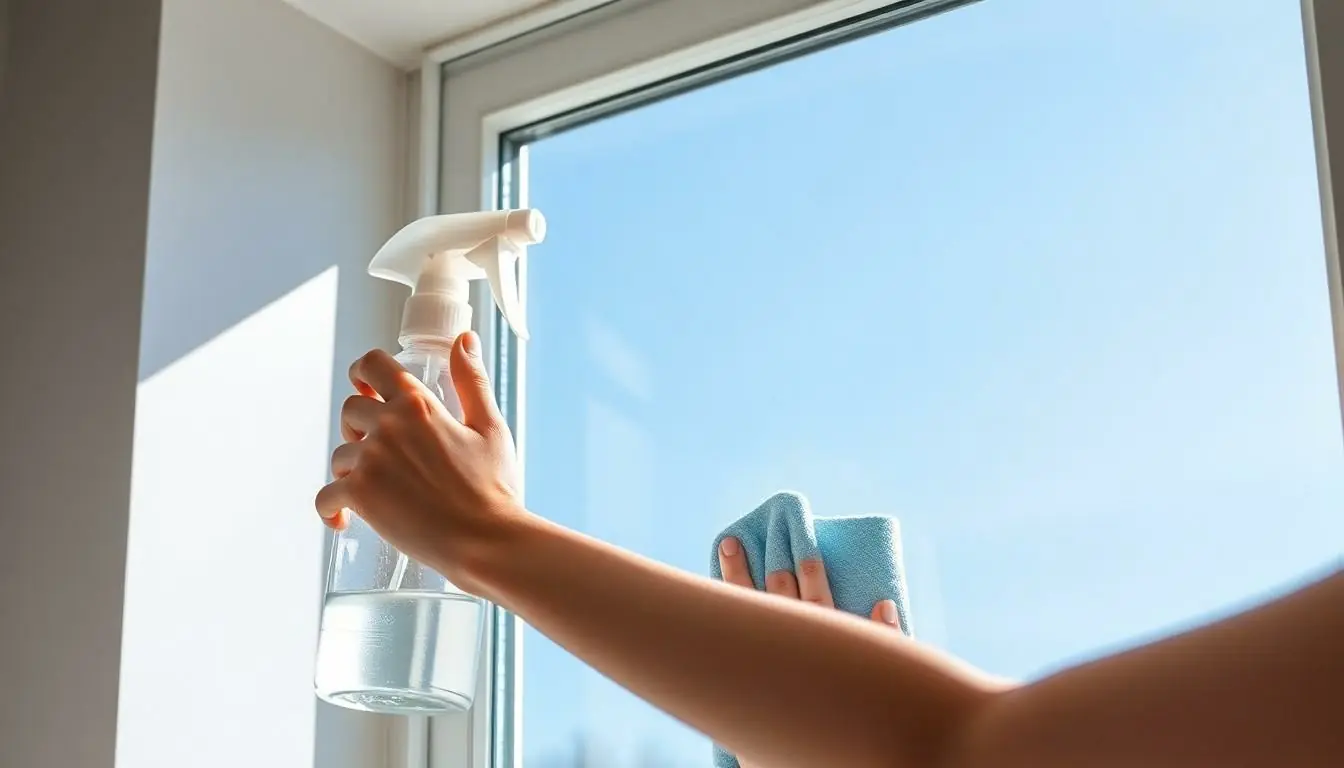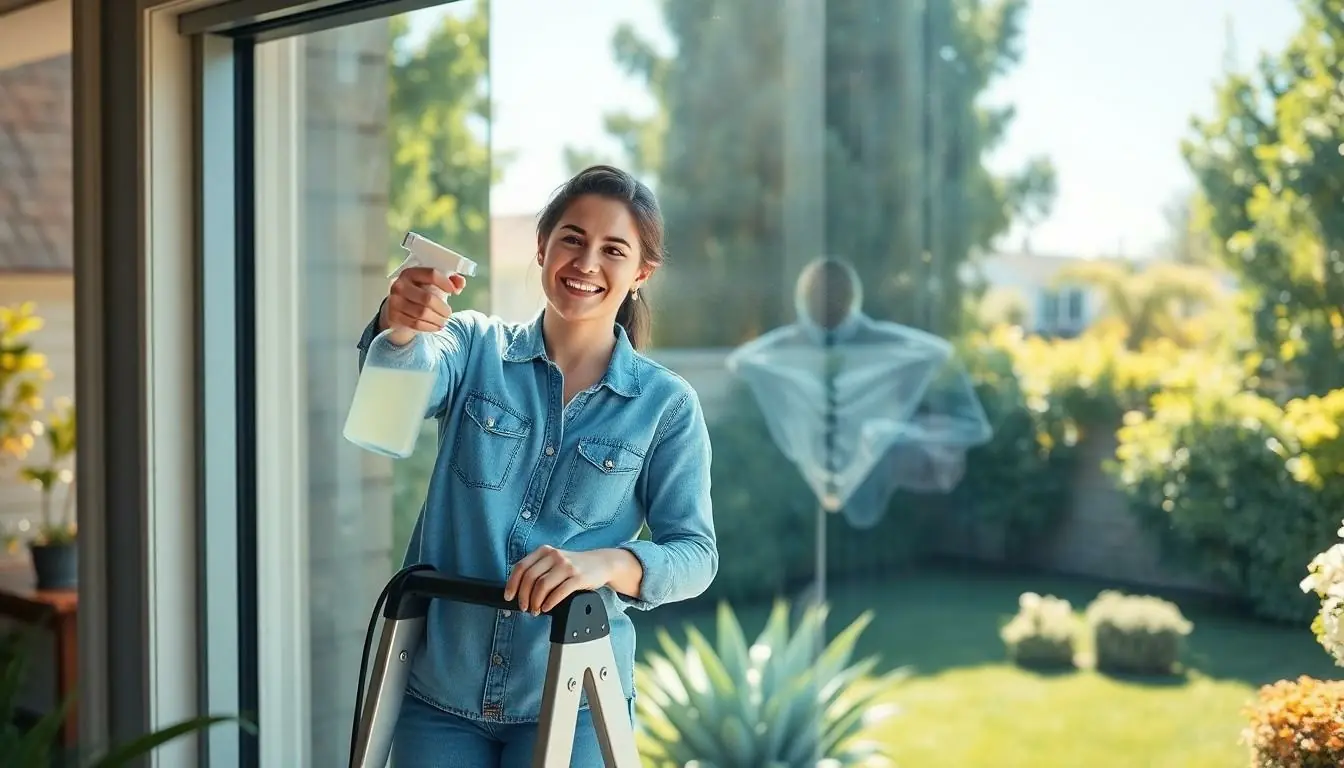Cleaning windows can feel like a never-ending chore. Smudges and streaks seem to multiply faster than you can say “Windex.” But what if there’s a way to banish those pesky marks without breaking the bank or inhaling harsh chemicals? Enter the world of home remedies—where everyday items transform into powerful cleaning allies.
Table of Contents
ToggleUnderstanding Home Remedies for Cleaning Windows
Home remedies for cleaning windows offer practical solutions using items often found in kitchens. Vinegar stands out as a top choice due to its ability to cut through grime effectively. This acidic liquid breaks down tough deposits without damaging glass surfaces. Baking soda also deserves mention, as its mildly abrasive nature can tackle stubborn stains with ease.
Many opt for a mixture of vinegar and water as a simple yet powerful cleaner. Combining one part vinegar with two parts water creates an efficient solution that leaves windows streak-free. The solution works well on both indoor and outdoor surfaces, making it versatile.
Newspapers are frequently used in the window cleaning process. They act as a cost-effective tool for polishing glass, leaving a shine without lint. A dedicated cloth or microfiber towel can also enhance the cleaning experience. Using these materials helps prevent scratches and ensures a smooth finish.
Essential oils can add a pleasant scent to homemade cleaners. A few drops of lemon or lavender oil mixed into a vinegar solution can invigorate the cleaning process. Such additions may even provide additional antibacterial properties.
Safety remains essential when using home remedies. Mixing bleach with vinegar is dangerous and can produce toxic fumes. Opting for safe combinations ensures a healthier home environment while achieving impressive results.
These remedies demonstrate an eco-friendly approach to window cleaning. Choosing natural ingredients reduces reliance on commercial products that often contain harmful chemicals. Ultimately, home remedies simplify window cleaning and promote a fresher living space.
Effective Natural Ingredients


Home remedies for cleaning windows often rely on simple, natural ingredients. These alternatives not only cut costs but also enhance the cleaning experience.
Vinegar and Water Solution
A vinegar and water solution stands out for its effectiveness. This combination effectively removes grime and streaks from glass surfaces. Users mix one part vinegar with two parts water in a spray bottle. Applying the mixture directly to glass, then wiping with a clean microfiber cloth ensures a streak-free shine. Vinegar’s acidity breaks down dirt, making cleaning easier.
Baking Soda Paste
Baking soda paste proves beneficial for tackling stubborn stains. This simple remedy involves mixing baking soda with a small amount of water to create a thick paste. Applying this paste to problematic areas allows time for it to penetrate and soften the grime. After a brief wait, scrubbing with a soft cloth or sponge removes the paste and reveals clean glass.
Lemon Juice and Water
Lemon juice and water offer a fresh-smelling alternative for window cleaning. The citric acid in lemon juice acts as a natural degreaser. Mixing one part lemon juice with two parts water enhances cleaning power. Spraying the solution onto the glass and wiping it with a lint-free cloth results in a sparkling finish. Lemon juice not only cleans but also leaves a pleasant citrus aroma.
Step-by-Step Window Cleaning Techniques
Effective window cleaning requires a few simple techniques using home remedies. These methods provide a streak-free shine while ensuring safety and environmental friendliness.
Preparing Your Cleaning Solution
Start by gathering household ingredients. Distilled white vinegar and water form the foundation of a powerful cleaning solution. Combining one part vinegar with two parts water in a spray bottle achieves optimal results. For tougher stains, mixing a paste of baking soda and water works well. Add essential oils like lemon or lavender to the vinegar solution for a pleasant scent. Essential oils enhance your cleaning experience without compromising effectiveness.
Application Methods
Utilize different application methods for the best results. Spraying the vinegar solution directly onto the window allows for uniform coverage. Use a microfiber cloth or a sponge to wipe the glass in a circular motion. This technique helps eliminate grime and prevents streaks. For persistent stains, apply the baking soda paste and let it sit for five to ten minutes before scrubbing. Using squeegees can provide an even cleaner finish, ensuring all liquid is removed effectively. Completing these steps ensures a sparkling, clean window.
Tips for Streak-Free Windows
Ensure that the cleaning solution is mixed properly for best results. A typical ratio to follow involves one part distilled white vinegar and two parts water inside a spray bottle. This combination creates an effective cleaner that cuts through grime effectively.
Apply the solution onto the window’s surface, but avoid overwhelming the glass with too much liquid. A light mist generally works best, allowing for a more controlled application and reducing the chances of streaks. Use a microfiber cloth or sponge to apply the solution, as these materials tend to absorb dirt better and leave less lint than paper towels.
When polishing windows, consider using newspaper instead of cloth. Newspapers can offer a streak-free finish due to their absorbent properties and ability to create friction. Additionally, try to employ circular motions when wiping down a window. This technique helps lift dirt away instead of pushing it around.
In cases of stubborn stains, allow the vinegar solution to sit for a few moments before scrubbing. Giving it time allows the acidity to break down tough grime, making it easier to clean. Following up with a squeegee can enhance the final results by removing excess liquid efficiently.
Don’t forget to wipe the squeegee from top to bottom in a straight line and dry the blade after each pass. This method prevents water from redistributing and forming streaks. Finally, use a clean, dry cloth to touch up any remaining spots. These steps can guarantee streak-free, sparkling windows for a clear view outside.







